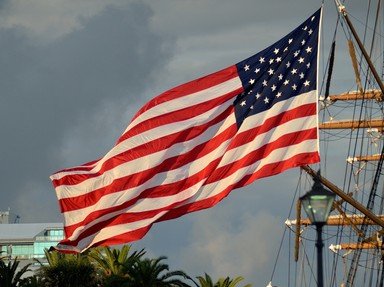Quiz Answer Key and Fun Facts
1. The first Dutch settlers arrived in 1614, near modern-day Albany. There they constructed a short-lived fort named Fort Nassau. What perennial problem caused the abandonment of the settlement in 1617?
2. In 1621, the Dutch West India Company formed, and in 1624 the first wave of 30 new families again arrived near Albany. This time, they built a fort on the west bank of the Hudson and named it after the Dutch royal family. What citrusy name did this new fort have?
3. In 1664, the English took control of Nieuw Nederland. They then renamed the town of Beverwijck in honor of which future king of England and Scotland?
4. The names of the boroughs of New York City are Dutch in origin as well, such as Staaten Eylandt for Staten Island. What was the original Dutch name of Brooklyn?
5. Wall Street takes its name from a wall constructed by the Dutch marking the limits of what was then Nieuw Amsterdam.
6. Many rivers that dot the Hudson River valley end with the suffix "-kill." Obviously, these rivers aren't murdering anybody, so what does "kill" mean in English?
7. Most people know how cheaply the Dutch acquired Manhattan. But a man named Johannes Hardenburgh bought land from the local Esopus Indians for £60 in what are today Ulster, Greene, Orange, Sullivan and Delaware Counties. Just how much property did Hardenburgh acquire?
8. In 1614, the Esopus Indians, a tribe of the Lenape people, attacked Dutch settlers in Wiltwijk (modern-day Kingston) because the Dutch were encroaching on their farmlands. Two other wars ensued as the Dutch continued to resettle the area. Eventually, the Esopus lost and ceded land that became which Ulster County town known for its Huguenot settlers?
9. The first capital of the state of New York was in Kingston, located in Ulster County.
10. Construction of Forts Montgomery and Clinton began in 1776 to control the Hudson River. Unfortunately, the British attacked while both forts were incomplete, resulting in their capture and destruction. However, the time wasted by the British in taking these forts prevented much-needed reinforcements and allowed the Americans to capture an army led by John Burgoyne at what decisive battle?
Source: Author
AlexT781
This quiz was reviewed by FunTrivia editor
agony before going online.
Any errors found in FunTrivia content are routinely corrected through our feedback system.
